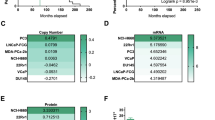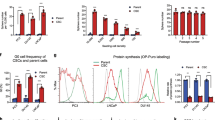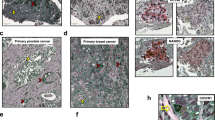Abstract
Multi-drug resistance is an important element which leads to ineffectiveness of chemotherapeutics. To identify subpopulations of cancerous prostate cells with mutli-drug resistance and cancer stem-cell properties has recently become a major research interest. We identified a subpopulation from the prostate cancer cell line 22RV1, which have high surface expression of both CD117 and ABCG2. We found this subpopulation of cells termed CD117+/ABCG2+ also overexpress stem cells markers such as Nanog, Oct4, Sox2, Nestin, and CD133. These cells are highly prolific and are also resistant to treatment with a variety of chemotherapeutics such as casplatin, paclitaxel, adriamycin, and methotrexate. In addition, CD117+/ABCG2+ cells can readily establish tumors in vivo in a relatively short time. To investigate the mechanism of aggressive tumor growth and drug resistance, we examined the CpG islands on the ABCG2 promoter of CD117+/ABCG2+ cells and found they were remarkably hypomethylated. Furthermore, chromatin immunoprecipitation assays revealed high levels of both histone 3 acetylation and H3K4 trimethylation at the CpG islands on the ABCG2 promoter. Our these data suggest that CD117+/ABCG2+ cells could be reliably sorted from the human prostate cancer cell line 22RV1, and represent a valuable model for studying cancer cell physiology and multi-drug resistance. Furthermore, identification and study of these cells could have a profound impact on selection of individual treatment strategies, clinical outcome, and the design or selection of the next generation of chemotherapeutic agents.



Similar content being viewed by others
References
Bryant RJ, Winder SJ, Cross SS, Hamdy FC, Cunliffe VT (2008) The Polycomb Group protein EZH2 regulates actin polymerization in human prostate cancer cells. Prostate 68:255–263
Ponti D, Costa A, Zaffaroni N, Pratesi G, Petrangolini G, Coradini D, Pilotti S, Pierotti MA, Daidone MG (2005) Isolation and in vitro propagation of tumorigenic breast cancer cells with stem/progenitor cell properties. Cancer Res 65:5506–5511
Reya T, Morrison SJ, Clarke MF, Weissman IL (2001) Stem cells, cancer, and cancer stem cells. Nature 414:105–111
Marx J (2003) Cancer research. Mutant stem cells may seed cancer. Science 301:1308–1310
Pardal R, Clarke MF, Morrison SJ (2003) Applying the principles of stem-cell biology to cancer. Nat Rev Cancer 3:895–902
Zhang S, Balch C, Chan MW, Lai HC, Matei D, Schilder JM, Yan PS, Huang TH, Nephew KP (2008) Identification and characterization of ovarian cancer-initiating cells from primary human tumors. Cancer Res 68:4311–4320
Bonnet D, Dick JE (1997) Human acute myeloid leukemia is organized as a hierarchy that originates from a primitive hematopoietic cell. Nat Med 3:730–737
Mayol JF, Loeuillet C, Herodin F, Wion D (2009) Characterisation of normal and cancer stem cells: one experimental paradigm for two kinds of stem cells. Bioessays 31:993–1001
Al-Hajj M, Wicha MS, Benito-Hernandez A, Morrison SJ, Clarke MF (2003) Prospective identification of tumorigenic breast cancer cells. Proc Natl Acad Sci USA 100:3983–3988
Dalerba P, Dylla SJ, Park IK, Liu R, Wang X, Cho RW, Hoey T, Gurney A, Huang EH, Simeone DM, Shelton AA, Parmiani G, Castelli C, Clarke MF (2007) Phenotypic characterization of human colorectal cancer stem cells. Proc Natl Acad Sci USA 104:10158–10163
O’Brien CA, Pollett A, Gallinger S, Dick JE (2007) A human colon cancer cell capable of initiating tumour growth in immunodeficient mice. Nature 445:106–110
Ricci-Vitiani L, Lombardi DG, Pilozzi E, Biffoni M, Todaro M, Peschle C, De Maria R (2007) Identification and expansion of human colon-cancer-initiating cells. Nature 445:111–115
Singh SK, Hawkins C, Clarke ID, Squire JA, Bayani J, Hide T, Henkelman RM, Cusimano MD, Dirks PB (2004) Identification of human brain tumour initiating cells. Nature 432:396–401
Lapidot T, Sirard C, Vormoor J, Murdoch B, Hoang T, Caceres-Cortes J, Minden M, Paterson B, Caligiuri MA, Dick JE (1994) A cell initiating human acute myeloid leukaemia after transplantation into SCID mice. Nature 367:645–648
Monzani E, Facchetti F, Galmozzi E, Corsini E, Benetti A, Cavazzin C, Gritti A, Piccinini A, Porro D, Santinami M, Invernici G, Parati E, Alessandri G, La Porta CA (2007) Melanoma contains CD133 and ABCG2 positive cells with enhanced tumourigenic potential. Eur J Cancer 43:935–946
Eramo A, Lotti F, Sette G, Pilozzi E, Biffoni M, Di Virgilio A, Conticello C, Ruco L, Peschle C, De Maria R (2008) Identification and expansion of the tumorigenic lung cancer stem cell population. Cell Death Differ 15:504–514
Dou J, Pan M, Wen P, Li Y, Tang Q, Chu L, Zhao F, Jiang C, Hu W, Hu K, Gu N (2007) Isolation and identification of cancer stem-like cells from murine melanoma cell lines. Cell Mol Immunol 4:467–472
Park DM, Rich JN (2009) Biology of glioma cancer stem cells. Mol Cells 28:7–12
Chen Z, Liu F, Ren Q, Zhao Q, Ren H, Lu S, Zhang L, Han Z (2010) Suppression of ABCG2 inhibits cancer cell proliferation. Int J Cancer 126:841–851
To KK, Zhan Z, Bates SE (2006) Aberrant promoter methylation of the ABCG2 gene in renal carcinoma. Mol Cell Biol 26:8572–8585
Allikmets R, Schriml LM, Hutchinson A, Romano-Spica V, Dean M (1998) A human placenta-specific ATP-binding cassette gene (ABCP) on chromosome 4q22 that is involved in multidrug resistance. Cancer Res 58:5337–5339
Doyle LA, Yang W, Abruzzo LV, Krogmann T, Gao Y, Rishi AK, Ross DD (1998) A multidrug resistance transporter from human MCF-7 breast cancer cells. Proc Natl Acad Sci USA 95:15665–15670
Baylin SB, Herman JG (2000) DNA hypermethylation in tumorigenesis: epigenetics joins genetics. Trends Genet 16:168–174
Jones PL, Veenstra GJ, Wade PA, Vermaak D, Kass SU, Landsberger N, Strouboulis J, Wolffe AP (1998) Methylated DNA and MeCP2 recruit histone deacetylase to repress transcription. Nat Genet 19:187–191
Szotek PP, Pieretti-Vanmarcke R, Masiakos PT, Dinulescu DM, Connolly D, Foster R, Dombkowski D, Preffer F, Maclaughlin DT, Donahoe PK (2006) Ovarian cancer side population defines cells with stem cell-like characteristics and Mullerian inhibiting substance responsiveness. Proc Natl Acad Sci USA 103:11154–11159
Teramura T, Fukuda K, Kurashimo S, Hosoi Y, Miki Y, Asada S, Hamanishi C (2008) Isolation and characterization of side population stem cells in articular synovial tissue. BMC Musculoskelet Disord 9:86
Lai D, Cheng W, Liu T, Jiang L, Huang Q (2009) Use of human amnion epithelial cells as a feeder layer to support undifferentiated growth of mouse embryonic stem cells. Cloning Stem Cells 11:331–340
Christgen M, Ballmaier M, Bruchhardt H, von Wasielewski R, Kreipe H, Lehmann U (2007) Identification of a distinct side population of cancer cells in the Cal-51 human breast carcinoma cell line. Mol Cell Biochem 306:201–212
Alvero AB, Fu HH, Holmberg J, Visintin I, Mor L, Marquina CC, Oidtman J, Silasi DA, Mor G (2009) Stem-like ovarian cancer cells can serve as tumor vascular progenitors. Stem Cells 27:2405–2413
Xi S, Geiman TM, Briones V, Tao YG, Xu H, Muegge K (2009) Lsh participates in DNA methylation and silencing of stem cell genes. Stem Cells 26:2691–2702
de Paiva CS, Chen Z, Corrales RM, Pflugfelder SC, Li DQ (2005) ABCG2 transporter identifies a population of clonogenic human limbal epithelial cells. Stem Cells 23:63–73
Bapat SA, Mali AM, Koppikar CB, Kurrey NK (2005) Stem and progenitor-like cells contribute to the aggressive behavior of human epithelial ovarian cancer. Cancer Res 65:3025–3029
Kim HJ, Kim JB, Lee KM, Shin I, Han W, Ko E, Bae JY, Noh DY (2007) Isolation of CD24(high) and CD24(low/-) cells from MCF-7: CD24 expression is positively related with proliferation, adhesion and invasion in MCF-7. Cancer Lett 258:98–108
Kumamoto H and Ohki K (2010) Detection of CD133, Bmi-1, and ABCG2 in ameloblastic tumors. J Oral Pathol Med 39:87–93
Collins AT, Berry PA, Hyde C, Stower MJ, Maitland NJ (2005) Prospective identification of tumorigenic prostate cancer stem cells. Cancer Res 65:10946–10951
Liu T, Wu J, Huang Q, Hou Y, Jiang Z, Zang S, Guo L (2008) Human amniotic epithelial cells ameliorate behavioral dysfunction and reduce infarct size in the rat middle cerebral artery occlusion model. Shock 29:603–611
Ding S, Gong BD, Yu J, Gu J, Zhang HY, Shang ZB, Fei Q, Wang P, Zhu JD (2004) Methylation profile of the promoter CpG islands of 14 “drug-resistance” genes in hepatocellular carcinoma. World J Gastroenterol 10:3433–3440
Keller JR, Ortiz M, Ruscetti FW (1995) Steel factor (c-kit ligand) promotes the survival of hematopoietic stem/progenitor cells in the absence of cell division. Blood 86:1757–1764
Mauduit C, Hamamah S, Benahmed M (1999) Stem cell factor/c-kit system in spermatogenesis. Hum Reprod Update 5:535–545
Ioshikhes IP, Zhang MQ (2000) Large-scale human promoter mapping using CpG islands. Nat Genet 26:61–63
Robertson KD (2005) DNA methylation and human disease. Nat Rev Genet 6:597–610
Lin W, Dent SY (2006) Functions of histone-modifying enzymes in development. Curr Opin Genet Dev 16:137–142
Zhang Y, Reinberg D (2001) Transcription regulation by histone methylation: interplay between different covalent modifications of the core histone tails. Genes Dev 15:2343–2360
Kim TH, Barrera LO, Zheng M, Qu C, Singer MA, Richmond TA, Wu Y, Green RD, Ren B (2005) A high-resolution map of active promoters in the human genome. Nature 436:876–880
Lee TI, Jenner RG, Boyer LA, Guenther MG, Levine SS, Kumar RM, Chevalier B, Johnstone SE, Cole MF, Isono K, Koseki H, Fuchikami T, Abe K, Murray HL, Zucker JP, Yuan B, Bell GW, Herbolsheimer E, Hannett NM, Sun K, Odom DT, Otte AP, Volkert TL, Bartel DP, Melton DA, Gifford DK, Jaenisch R, Young RA (2006) Control of developmental regulators by Polycomb in human embryonic stem cells. Cell 125:301–313
Boyer LA, Plath K, Zeitlinger J, Brambrink T, Medeiros LA, Lee TI, Levine SS, Wernig M, Tajonar A, Ray MK, Bell GW, Otte AP, Vidal M, Gifford DK, Young RA, Jaenisch R (2006) Polycomb complexes repress developmental regulators in murine embryonic stem cells. Nature 441:349–353
Maherali N, Sridharan R, Xie W, Utikal J, Eminli S, Arnold K, Stadtfeld M, Yachechko R, Tchieu J, Jaenisch R, Plath K, Hochedlinger K (2007) Directly reprogrammed fibroblasts show global epigenetic remodeling and widespread tissue contribution. Cell Stem Cell 1:55–70
Huarte M, Lan F, Kim T, Vaughn MW, Zaratiegui M, Martienssen RA, Buratowski S, Shi Y (2007) The fission yeast Jmj2 reverses histone H3 lysine 4 trimethylation. J Biol Chem 282:21662–21670
Martin C, Zhang Y (2005) The diverse functions of histone lysine methylation. Nat Rev Mol Cell Biol 6:838–849
Acknowledgments
This work was supported by grant from the Shanghai Municipal Health Bureau Fund for Young Scholars (No. 2008Y002) and Medicine-Engineering Unite Fund for Shanghai Jiaotong University (No. YG2009MS47) and Shanghai Committee Medical Science Foundation of China (No. 10411967100) to Te Liu. And this work was supported by a grant from the National High Technology Research and Development Program of China (863 Program) (No.2008AA101001) and Science and Technology Department of Shanghai Research Fund (No.07DZ19063-2) to Zhixue Liu. We thank Dr Jun Liu (Rutgers University) for discussion and proofreading the manuscript.
Author information
Authors and Affiliations
Corresponding author
Additional information
Te Liu and Xiling Du contributed equally to this work.
Rights and permissions
About this article
Cite this article
Liu, T., Xu, F., Du, X. et al. Establishment and characterization of multi-drug resistant, prostate carcinoma-initiating stem-like cells from human prostate cancer cell lines 22RV1. Mol Cell Biochem 340, 265–273 (2010). https://doi.org/10.1007/s11010-010-0426-5
Received:
Accepted:
Published:
Issue Date:
DOI: https://doi.org/10.1007/s11010-010-0426-5




